本篇文章为大家展示了怎么实现SpringBoot的底层注解,内容简明扼要并且容易理解,绝对能使你眼前一亮,通过这篇文章的详细介绍希望你能有所收获。
1、基本使用
自定义配置类
/**
* 1、@Configuration 告诉SpringBoot这是一个配置类,相当于一个xml配置文件
*
* 2、配置类里面使用 @Bean 标注在方法上 来给容器注册组件,默认是单实例的
*
* 3、配置类本身也是一个组件
*/
@Configuration(proxyBeanMethods = true)
public class MyConfig {
@Bean
public User user01(){
return new User("zhangsan",23);
}
@Bean
public Pet pet01(){
return new Pet("cat");
}
}主程序类
/**
* 主程序类
* @SpringBootApplication:这是一个SpringBoot应用
*/
@SpringBootApplication
public class MainApplication {
public static void main(String[] args) {
//返回IOC容器
ConfigurableApplicationContext context = SpringApplication.run(MainApplication.class, args);
//从容器中获取bean
User user = context.getBean(User.class);
System.out.println(user);
Pet pet = context.getBean("pet01", Pet.class);
System.out.println(pet);
MyConfig myConfig = context.getBean(MyConfig.class);
System.out.println(myConfig);
/*如果配置@Configuration(proxyBeanMethods = true),代理对象调用方法从容器中拿组件,SpringBoot总会检查容器中是否有这个组件
* 保持组件的单实例*/
User user1 = myConfig.user01();
User user2 = myConfig.user01();
System.out.println(user1 == user2);
}
}打印结果:

2、Full模式与Lite模式
Full模式是指proxyBeanMethods = true,开启代理bean的方法。此时调用配置类中每一个给而容器注册组件方法,都会从容器中找组件,保持单例模式。
/*如果配置@Configuration(proxyBeanMethods = true),代理对象调用方法从容器中拿组件,SpringBoot总会检查容器中是否有这个组件 * 保持组件的单实例*/ User user1 = myConfig.user01(); User user2 = myConfig.user01(); System.out.println(user1 == user2); //true
Lite模式是指proxyBeanMethods = false,关闭代理bean的方法。容器中不会保存代理对象,每一次调用配置类里面的方法,·都会产生一个新的对象。这可以解决组件依赖的问题。
User组件里面有Pet组件
public class User {
private String name;
private Integer age;
private Pet pet;
public Pet getPet() {
return pet;
}
}自定义的配置类中proxyBeanMethods设置为false
@Configuration(proxyBeanMethods = false)
public class MyConfig {
@Bean
public User user01(){
User user = new User("zhangsan", 23);
//User组件依赖了Pet组件
user.setPet(pet01());
return user;
}
@Bean
public Pet pet01(){
return new Pet("cat");
}
}主程序类
@SpringBootApplication
public class MainApplication {
public static void main(String[] args) {
User user01 = context.getBean("user01", User.class);
Pet pet01 = context.getBean("pet01", Pet.class);
System.out.println(user01.getPet() == pet01); //true
}
}打印结果:

配置类组件之间无依赖关系用Lite模式加速容器启动过程,减少判断
配置类组件之间有依赖关系,方法会被调用得到之前单实例组件,这时要用Full模式
@Import注解可以给容器中自动创建出指定类型的组件,默认组件的名字就是全类名
@Import(DBHelper.class)
@Configuration(proxyBeanMethods = false)
public class MyConfig {
}在容器中或者这个导入的组件
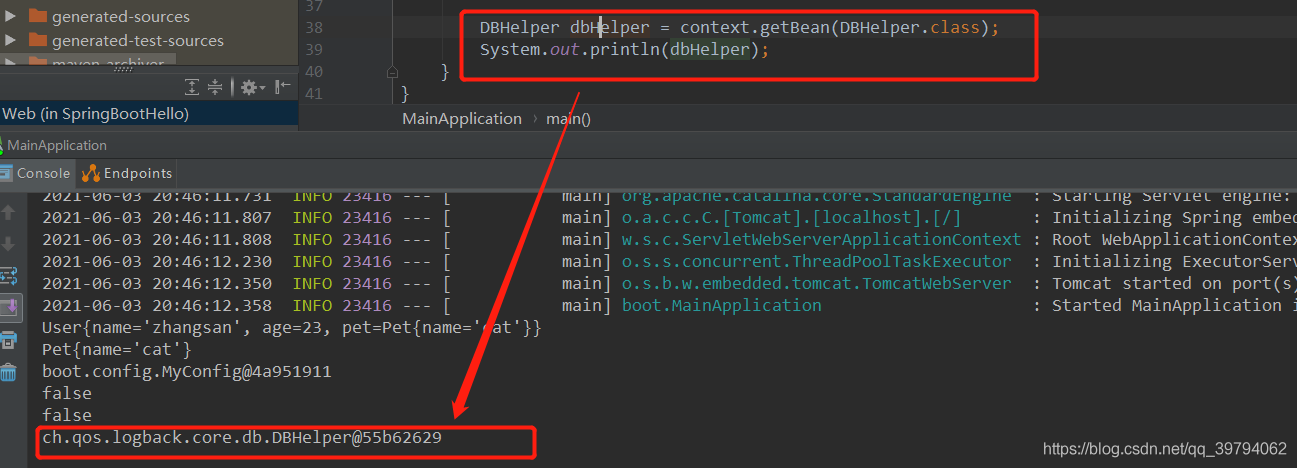
满足Conditional指定的条件的方法,则进行组件注入
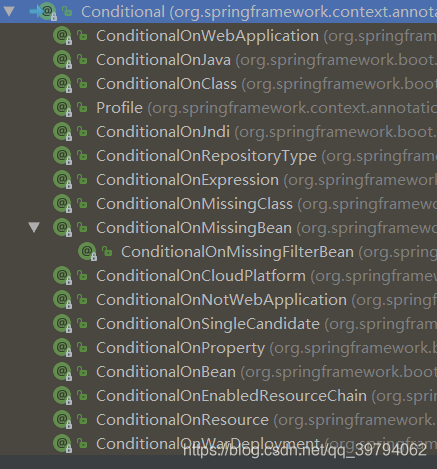
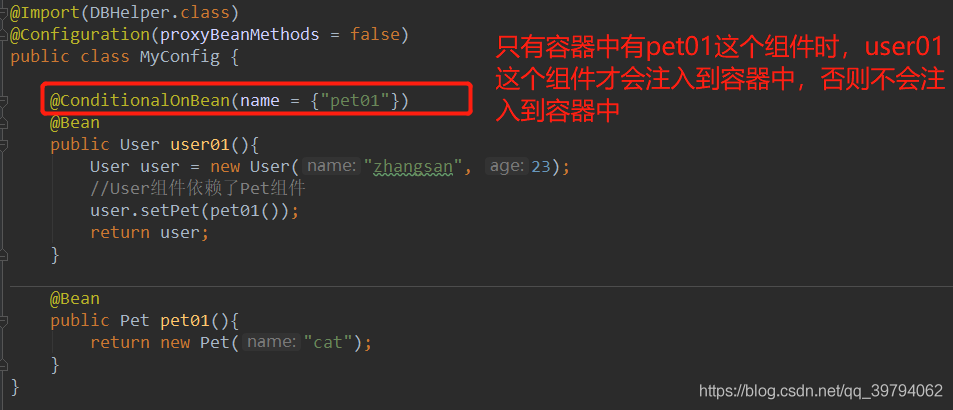
也可以标注在类上,当容器中存在指定的组件的时候,配置类中的方法才会生效
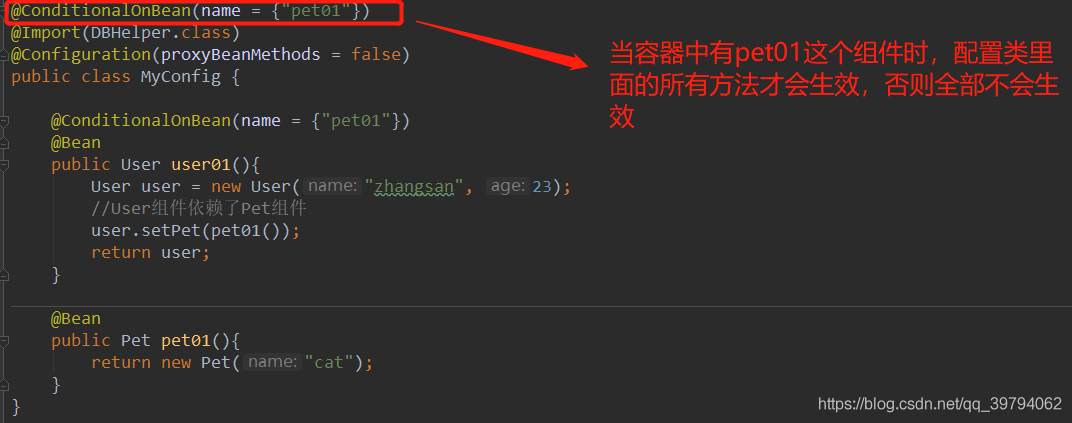
外部配置文件
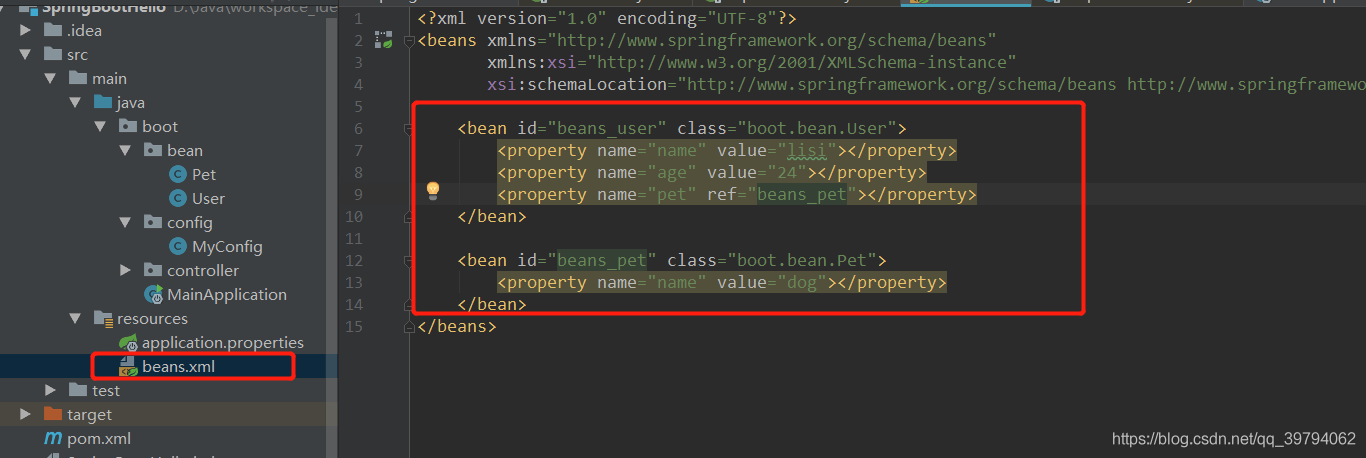
导入外部配置文件
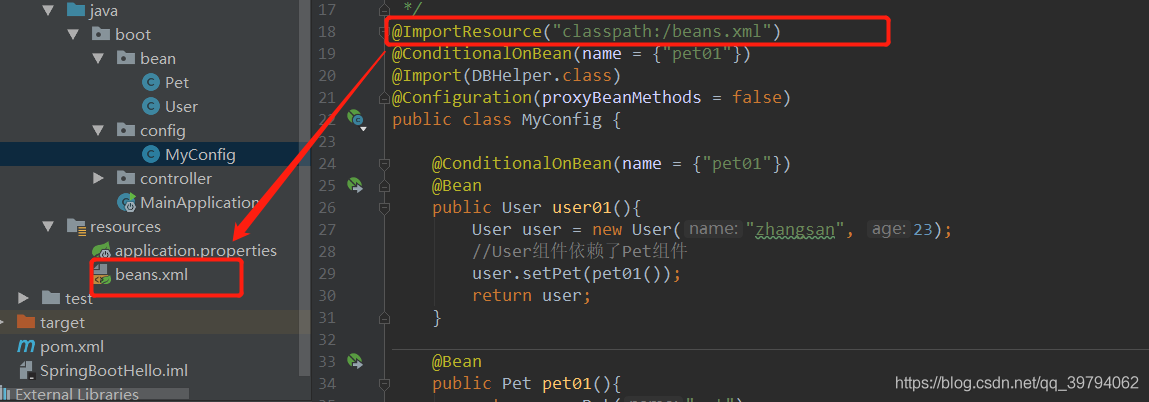
获取导入的外部组件
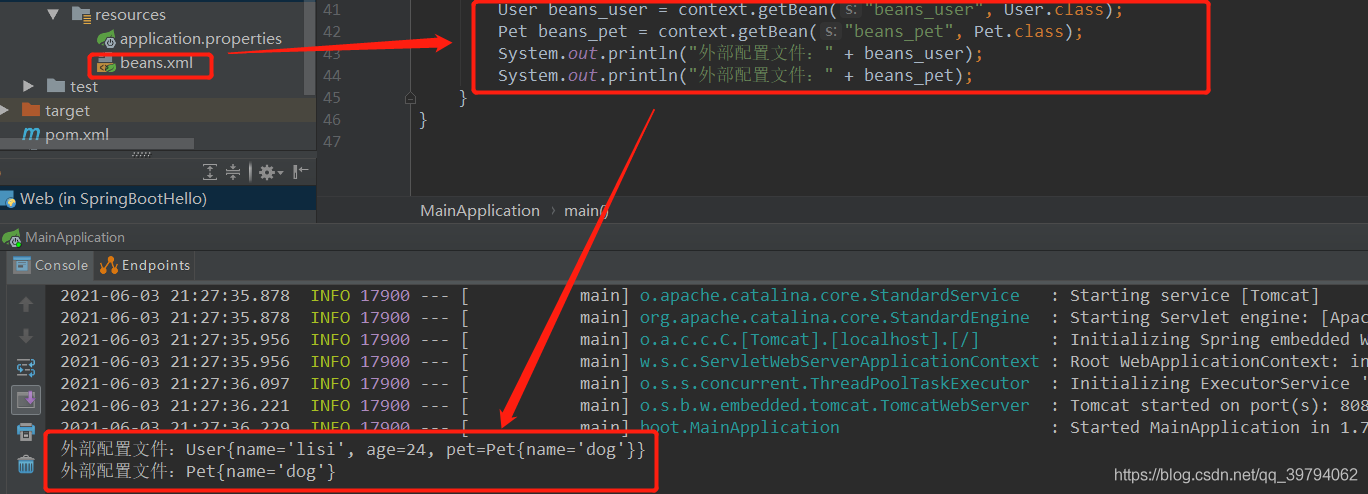
JavaBean与配置文件中属性进行绑定
需要使用@ConfigurationProperties 和 @Component两个注解,@Component注解将组件注册到容器中,因为只有在容器中的组件,才能使用SpringBoot提供的一些强大的注解功能

访问请求获取绑定的JavaBean

还可以在配置类中使用@EnableConfigurationProperties开启组件属性配置功能,并把这个组件自动注册到容器中,这样就不需要再使用 @Component注解
@EnableConfigurationProperties(Pet.class)
public class MyConfig {
}//@Component
@ConfigurationProperties(prefix = "mydog")
public class Pet {
}上述内容就是怎么实现SpringBoot的底层注解,你们学到知识或技能了吗?如果还想学到更多技能或者丰富自己的知识储备,欢迎关注亿速云行业资讯频道。
免责声明:本站发布的内容(图片、视频和文字)以原创、转载和分享为主,文章观点不代表本网站立场,如果涉及侵权请联系站长邮箱:is@yisu.com进行举报,并提供相关证据,一经查实,将立刻删除涉嫌侵权内容。